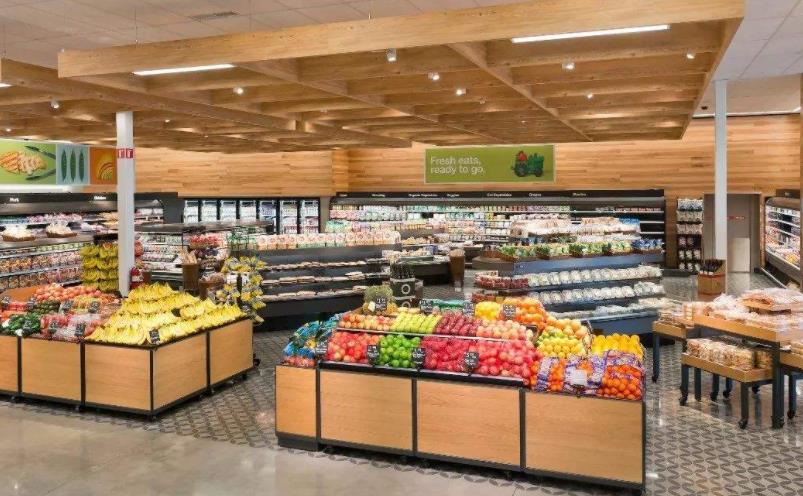市场学paper作业代写:Differentiation in the Marketing of Fashion Clothes

本文是市场学专业的paper范例,题目是“Differentiation in the Marketing of Fashion Clothes(服装营销中的差异化)”,随着20世纪90年代英国服装零售市场格局的变化,英国服装市场已经基本成熟。传统的采购来源,如百货商店、服装独立商店和杂货铺,发生了重大转变,转而青睐折扣店、超市和体育用品商店。这反映了英国的“休闲化”,以及更便宜的进口产品对零售价格水平的下行压力。买服装和鞋类越来越远离传统的高街的位置外地购物中心、家庭通常花的一部分,好的一天浏览和购物在各种各样的商店,而不是访问当地的高街购物在特定的媒体。
The UK clothing market is essentially mature, following changes in the profile of the UK retail market for clothing during the 1990s. There was a major shift away from traditional sources of purchasing, such as department stores, clothing independents and variety stores, in favour of discounters, supermarkets and sports outlets. This reflects the ‘casualisation’ of the UK and the downward pressure of cheaper, imported products on retail price levels. Shopping for clothing and footwear is increasingly moving away from the traditional high street locations to out-of-town shopping centres, where families may typically spend a good part of a day browsing and shopping in a wide range of stores, rather than visiting their local high street to shop in specific outlets.

Mainstream women’s clothing is still strongly populated by private labels from variety stores, such as Marks & Spencer or Bhs, and clothing specialists, such as Next, River Island and Principles. Premium product ranges remain focused primarily on department stores and there is some degree of “trading up” to labels such as Alexon, Planet, Viyella or Jaeger by consumers with greater disposable income levels (Global Market Information Database, 2005). Discounters significantly strengthened their share of consumer purchasing over the last two decades, largely due to the success of the Matalan and Primark chains. However, there are indications in the last two years that strong growth in the position of supermarket groups, largely due to their expansion into fashion wear, is beginning to shift value-driven purchasing in their favour away from discounters, though this shift is not yet decisive. Supermarkets are becoming increasingly involved in clothing; with companies such as Asda, Tesco and J Sainsbury have all launched clothing collections under a brand identity during the past few years. For example, J Sainsbury commissioned fashion designer Jeff Banks to launch a clothing range and Asda’s George at Asda range quickly became well-established, making supermarkets increasingly key players in the market. However, supermarkets still tend to focus on price, rather than fashion, and are thus not yet truly key players on the scale of Marks and Spencer, Next and Matalan (Global Market Information Database, 2005).
The UK consumer increasingly regards an item of clothing or footwear as a disposable item, rather than an investment and this has affected both consumers’ approaches to purchasing decisions, and the fashion marketers’ sales practices. Whilst quality remains important, as an item must be fit for use, fashion styles play a much greater role in everyday purchasing than previously, so that a piece of clothing may not be expected to last longer than one season. This, in turn, places an emphasis on price levels; and the significantly increased availability of ‘value’ brands in supermarkets and discounters, which stimulates volume purchasing without contributing to value sales development. There is also a growing emphasis on purchasing clothing for leisure use, which has a direct impact on the sales practices used, and on their styling. The dramatic increase in purchasing of sports clothing and footwear during recent years was largely underwritten by fashion marketing, rather than by a significantly higher level of participation in active sports.
英国消费者越来越多地将衣服或鞋子视为一次性物品,而不是一种投资,这既影响了消费者的购买决策,也影响了时尚营销人员的销售行为。虽然质量仍然很重要,因为一件衣服必须适合使用,但时尚风格在日常购买中起着比以前更大的作用,所以一件衣服可能不会穿超过一个季节。这反过来又强调了价格水平;超市和折扣店中“超值”品牌的可得性显著增加,这刺激了大量购买,但对超值销售的发展没有贡献。人们也越来越重视购买休闲服装,这对服装的销售方式和款式有直接影响。近年来,运动服装和鞋类的购买急剧增加,主要是由于时尚市场的推动,而不是由于参加积极运动的人数显著增加。
Although a necessary requirement of life, which requires regular replacement for functional reasons, let alone in response to fashion trends, clothing sales show an increasing trend of been strongly affected by price discounting during recent years (Global Market Information Database, 2005). Increased competition at retail level, particularly due to the growing involvement of supermarkets and discounters, is causing deflation on prices in most UK clothing and footwear. This situation has been further exacerbated by the growing globalisation of product supply, with formerly UK production increasingly relocated to low-cost production units in the Far East and Eastern Europe.
虽然服装是一种生活必需品,由于功能原因需要定期更换,更不要说要适应时尚趋势,但近年来服装销量受到价格折扣的强烈影响呈上升趋势(Global Market Information Database, 2005)。零售业竞争的加剧,特别是由于超市和折扣店越来越多的参与,正在导致英国大多数服装和鞋类的价格紧缩。随着产品供应的日益全球化,这种情况进一步恶化,以前英国的生产越来越多地转移到远东和东欧的低成本生产单位。
This major shift of production of clothing away from the UK to low-cost production locations, primarily in Asia-Pacific or Eastern Europe, has raised marketing threats for several UK companies over ethical issues surrounding the reported exploitation of cheap labour in these overseas production units. There was extensive media coverage of Marks & Spencer’s decision to abandon its previous strategy of sourcing the majority of its products from UK production (Global Market Information Database, 2005) To compensate for this shift in production, leading UK manufacturers began to emphasise their extensive expertise in product design, which adds value to the finished product. This offers an excellent opportunity for companies with the necessary experience to design and market new ranges of products with lower production overheads.
836/5000
服装生产从英国转移到低成本的生产地点,主要是在亚太或东欧,这对几家英国公司的营销带来了伦理问题的威胁,这些伦理问题围绕着这些海外生产单位剥削廉价劳动力的报道。媒体广泛报道了玛莎百货决定放弃其先前的战略,即从英国生产采购其大部分产品(全球市场信息数据库,2005年)。为了弥补这种生产转移,领先的英国制造商开始强调他们在产品设计方面的广泛专业知识,这会增加成品的价值。这为具有必要经验的公司提供了一个极好的机会,以较低的生产管理费用设计和销售新产品系列。
b) Your assessment of the marketing strengths and weaknesses of the key players in terms of branding, reputation, differentiation and elements of the marketing mix.
Marks & Spencer has historically had a reputation as a leading retailer in the UK’s clothing sector, and this is a position that the company undoubtedly aspires to maintain. The bulk of its turnover is attributable to clothing, approximately 50%, and food, with 44%, (Global Market Information Database, 2005). However, as competition in the apparel sector intensified in the late 1990s, Marks & Spencer struggled to maintain market share. Marks & Spencer has always positioned and differentiated itself as offering reasonably priced, high quality and well-fitting clothes, but this marketing strategy received something of a battering at the end of the 20th century, as designers and commentators alike criticised the company for the very aspects of its brand which had traditionally attracted customers to the chain. However, Marks and Spencer’s marketing mix, primarily its design and quality, has received far more favourable press in recent years, and a renewed focus on casualwear and the core womenswear ranges, Per Una and Blue Harbour, have helped the company improve performance and regain market share (Strategic Direction, 2005).
玛莎百货历来是英国服装行业的领先零售商,这无疑是该公司渴望保持的地位。其营业额的大部分是服装,约50%,和食品,44%,(全球市场信息数据库,2005年)。然而,随着20世纪90年代末服装行业的竞争加剧,玛莎百货(Marks & Spencer)难以维持市场份额。玛莎百货一直把自己定位为提供价格合理、质量高、合身的服装,并使自己与众不同,但这种营销策略在20世纪末受到了一些打击,因为设计师和评论家都批评该公司的品牌正是传统上吸引顾客的地方。然而,玛莎百货的营销组合,主要是其设计和质量,近年来得到了更多的好评,并重新关注休闲服装和核心女装系列,Per Una和Blue Harbour,帮助公司提高业绩和重新获得市场份额(战略方向,2005年)。
Matalan’s combination of low overheads, due to low cost out-of-town locations and overseas direct product sourcing, has enabled the chain to undercut high street competitors by as much as 50% on its own brands, and by as much as 35% on external branded products. Complementing its low price differentiation, Matalan also has an astute marketing mix. It operates as a clothing club: customers pay a mandatory £1 membership fee for the privilege of shopping at the stores. Membership information also enables Matalan to use direct marketing and to target customers with catalogues and tailored clothing lines to meet demand (Rowley and Haynes, 2005) The potential of the discount clothing market remains significant. Marginally larger than its leading competitor, New Look, Matalan looks relatively well placed to make the most of burgeoning opportunities in the discount sector. However, the recent slowdown in the clothing market does not appear to have been to Matalan’s advantage. The company should be in a position to benefit from trading down by consumers in the event of economic down-turn, but recent figures suggest that consumers are shopping elsewhere to get the best deals on designer names, and that Matalan’s bargain image now counts against it in the increasingly celebrity image-driven fashion markets

Next is one the major success stories of the upper end of the UK clothing mid-market. A retailer of fashionable, moderately priced clothing, for trendy men, women and children, Next offers products targeted at the top end of the mass market, and aims to combine individual styling with quality and value for money. Resisting the temptation to be overly trend setting, opting to differentiate itself by offering sensible and stylish clothing, rather than highly fashionable items, Next has maintained strong consumer loyalty. Since the early 1990s, Next has resisted all attempts to increase the number of clothing brands that it operates, convinced that diversification would ultimately be to the detriment of the Next brand. The success that it has achieved over many years as a result of product development, the progressive move to larger stores and the increase in the number of home shopping customers has convinced both the retailer itself and investors that it is right to continue with this marketing mix (Datamonitor, 2005)
接下来是一个主要的成功故事的高端英国服装中端市场。Next是一家面向时尚男性、女性和儿童的时尚、价格适中的服装零售商。Next的产品定位于高端大众市场,旨在将个人风格与质量和性价比结合起来。Next抵制住了过度引领潮流的诱惑,选择通过提供明智和时尚的服装而不是高度时尚的产品来区分自己,因此保持了很强的消费者忠诚度。自上世纪90年代初以来,Next拒绝了所有增加旗下服装品牌数量的尝试,认为多元化最终会损害Next品牌的利益。成功,它取得了多年的产品开发,逐步转移到更大的商店和家庭购物的顾客的数量的增加零售商本身和投资者相信它是正确的,继续用这个营销组合(Datamonitor, 2005)
c) Your marketing recommendations for any organisation wanting to enter the market.
In 2009, the United Kingdom apparel retail industry is forecast to have a value of $45.8 billion, an increase of 18.5% since 2004. The compound annual growth rate of the industry in the period 2004-2009 is predicted to be 3.4% (Datamonitor, 2005). This indicates that there will be space for new retailers to enter the market for clothing. However, consumer purchasing of clothing and footwear is now moving away from traditional outlets, such as department stores, variety stores and high street specialists, towards grocery supermarkets and discounters. This reflects a general move to out-of-town shopping, with consumers particularly attracted to the convenience of purchasing all their clothing items at the same time, and in the same store as they regularly buy groceries (Global Market Information Database, 2005) The brand name of an item of clothing also acts as a strong influence on the purchase decision, particularly among younger consumers. Peer pressure means that it is critically important to be seen wearing the “right” brand of sportswear, and sales of children’s wear have been boosted by this fact in recent years. At the same time, parents are typically enjoying a greater degree of disposable income during the review period, which is increasingly focused on spending on fashion items for their children (Coughlan, 2006).
Equally, the downward pricing trend in the UK fashion retail industry has led many retailers to focus upon profitability, rather than sales growth in recent years. Companies are continually trying to cut costs by utilizing measures such as larger retail formats, and by shifting production or changing their suppliers to lower cost regions in Latin America and Asia-Pacific. Some retailers have cut production and entered into niche markets in an attempt to add value to their business and improve margins. The UK retail industry is thus undergoing significant changes; traditionally dominated by high street retailers, supermarket chains such as ASDA and Tesco are expanding their clothing lines aggressively and gaining an increasing share of apparel sales. Originally the supermarkets purely focused on price to make their apparel attractive to British consumers and subsequently there was a certain stigma attached to their garments. However, as time has passed and supermarket labels have become more widely accepted, they are moving their range of clothes more upmarket, placing increased pressure on to traditional apparel retailers.
同样,近年来,英国时尚零售行业的降价趋势导致许多零售商关注的是盈利能力,而不是销售增长。企业不断试图削减成本,比如采用更大的零售业态,以及将生产或供应商转移到成本更低的拉美和亚太地区。一些零售商削减产量,进入利基市场,试图增加业务价值,提高利润率。因此,英国零售业正在经历重大变化;阿斯达(ASDA)和特易购(Tesco)等传统上由高街零售商主导的连锁超市正在积极扩大其服装产品线,并在服装销售中获得越来越大的份额。最初,超市纯粹关注价格,以使他们的服装吸引英国消费者,后来,他们的服装有一定的耻辱。然而,随着时间的推移,超市品牌已被更广泛地接受,它们正将自己的服装系列转向更高档的市场,这给传统服装零售商带来了越来越大的压力。
Given this, any organization wanting to enter the UK fashion retail market is likely to have to differentiate itself based on brand, rather than quality or price. As new entrants will almost undoubtedly lack the buying power and reach of M&S, Next, Matalan or Tesco, they would be better advised to concentrate on building a profitable niche, and the best way to do this is to make themselves a desirable brand. Given the preference for the latest fashions, at reasonable prices, with clothes only intended to last for the season they are purchased, the ability to react rapidly to changes in the market is also vital for any new entrant. This would differentiate them from the large chains, which often have structured, lean, and slow supply chains. Finally, although the need to base production facilities abroad, to take advantage of low labour costs, is now widely recognised as being vital to profitability, there have been high levels of negative publicity over potential “sweatshop” working practices. As such, a significant advantage can accrue to an organisation which differentiates itself on the basis of providing good wages and working conditions to its overseas workers, provided that the price of the clothes can still be kept competitive.
有鉴于此,任何想要进入英国时尚零售市场的组织都可能不得不根据品牌而不是质量或价格来区分自己。由于新进入者几乎毫无疑问将缺乏玛莎百货、Next、Matalan或乐购那样的购买力和覆盖范围,他们最好还是专注于建立一个有利可图的利基市场,而做到这一点的最好方法是把自己打造成一个令人满意的品牌。考虑到人们喜欢最新的时装,价格合理,衣服只能在购买的季节里穿,因此对于任何新进入者来说,对市场变化做出快速反应的能力也是至关重要的。这将使它们有别于大型供应链,后者通常拥有结构化、精益和缓慢的供应链。最后,尽管人们普遍认为,为了利用低廉的劳动力成本,需要在国外建立生产基地,这对盈利至关重要,但有关潜在的“血汗工厂”工作方式的负面宣传一直很高。因此,如果一个组织能在服装价格仍保持竞争力的前提下,为海外工人提供良好的工资和工作条件,从而使自己与众不同,那么它就能获得显著的优势。
留学生dissertation相关专业范文素材资料,尽在本网,可以随时查阅参考。本站也提供多国留学生课程paper写作指导服务,如有需要可咨询本平台。